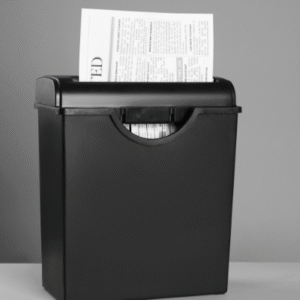In Malaysia’s fast-paced business and education environment, custom booklet printing plays a practical role in how organisations communicate, present, and promote ideas. Whether used for product catalogues, training manuals, company profiles, or event programmes, booklets serve as tangible tools that deliver both information and impressions.
For anyone new to printing, navigating the process can feel complex. From choosing paper types to deciding on layout and finishing, many small decisions shape the final outcome. This guide helps you make informed choices and avoid common mistakes—whether you’re preparing a large publication or exploring small booklet printing for quick projects or targeted distribution.
Why Booklet Printing Still Matter in the Digital Age?
Despite the rise of digital content, printed booklets continue to hold value. Printed material feels permanent. People engage more deeply with something they can flip through, mark up, or carry along.
Printed booklets avoid screen fatigue. They present your message without notifications, links, or pop-ups. In business meetings, conferences, or classrooms, they focus attention and reinforce professionalism.
Step 1: Define the Purpose of Your Booklet
Before choosing the size, paper, or design, clarify what you want the booklet to do.
Questions to Ask:
- Who will read it?
- How will it be used—once or repeatedly?
- Does it support a sale, explain a process, or showcase a brand?
- Will it be handed out at events or mailed to individuals?
Defining purpose early helps shape every decision that follows—from size and paper weight to binding style and cover finish.
Step 2: Choose the Right Size and Orientation
Size influences how content is perceived and how portable the booklet feels. Standard A4 sizes suit reports and formal content. A5 or smaller formats work well for product guides, menus, or giveaways.
Orientation also matters. Portrait layouts suit most text-heavy formats, while landscape works best for visuals or charts.
Considerations for Small Booklet Printing
For compact uses—like instruction leaflets or quick reference tools—small booklet printing offers practical advantages. It saves paper, fits pockets or bags, and travels well during events or deliveries.
Step 3: Select Your Binding Style
The binding holds your booklet together. The method you choose affects durability, flexibility, and final appearance.
Common Binding Options:
- Saddle Stitching
- Staples along the fold. Best for booklets under 60 pages.
- Perfect Binding
- Glue along the spine. Suitable for larger, more polished publications.
- Wire-O or Spiral Binding
- Uses metal or plastic coils. Opens flat. Ideal for training manuals or notebooks.
Each style suits different booklet types. Training guides may use coil binding for flat openings. Annual reports often favour perfect binding for neatness.
Step 4: Understand Paper Types and Finishes
Paper affects how your booklet looks, feels, and survives handling. Choose based on function, not just cost.
Key Paper Elements:
- Weight (GSM): Higher GSM feels thicker and more premium. Covers usually range from 200 to 300 GSM; inside pages use 80–150 GSM.
- Coating: Matte, gloss, or uncoated. Gloss boosts photos. Matte feels smooth and professional. Uncoated suits writing or drawing.
- Texture: Adds character. Smooth papers feel clean; textured ones suggest tradition or artistry.
Always match paper to purpose. A training manual with heavy graphics may need glossy pages. A planning guide benefits from writeable, uncoated sheets.
Step 5: Design Layout and Readability
Design ensures your booklet does more than look good—it must be easy to read and navigate. This step matters even more with smaller formats.
Design Tips:
- Use consistent fonts and colours
- Leave enough white space to reduce clutter
- Use headings, bullet points, and icons to guide the eye
- Avoid overloading pages with too much text or imagery
- Include a contents page and page numbers in longer booklets
If you’re unfamiliar with layout software, work with a designer or use templates that match your booklet’s shape and size.
Step 6: Prepare Print-Ready Files
Even great designs fall short if they aren’t print-ready. Avoid delays and errors by preparing files in the correct format.
Checklist:
- Save as PDF with high-resolution images (300 DPI minimum)
- Convert text to outlines or embed fonts
- Include bleed and crop marks
- Check that pages appear in correct order and orientation
- Label files clearly and consistently
Double-check these steps before submitting. Clear files reduce back-and-forth and prevent unexpected results.
Common Booklet Types and Their Features
Below is a guide to typical booklet types and the format elements often chosen for them. This helps match goals to design.
| Booklet Type | Size | Binding | Paper Finish | Common Uses |
| Event Programme | A5 | Saddle Stitch | Matte Cover + Gloss Inside | Ceremonies, launches |
| Product Catalogue | A4 | Perfect Bound | Gloss | Retail, wholesale listings |
| Training Manual | A4 | Spiral | Uncoated or Matte | Education, onboarding |
| Pocket Guide | A6 or custom | Saddle Stitch | Matte | Travel, maps, quick tips |
| Marketing Brochure | Square or A5 | Saddle or Perfect | Gloss or Silk | Promotions, branding materials |
This table offers a helpful starting point when requesting a quote or drafting design layouts.
Step 7: Order Quantity and Reprint Considerations
How many booklets you print depends on budget, purpose, and shelf life.
Factors to Consider:
- Events may need larger batches.
- Annual reports print once a year, so accuracy matters.
- Instruction manuals may reprint often, so flexibility is key.
- Short runs suit small booklet printing, especially when updating frequently.
Always confirm minimum and maximum order quantities. Ask about storage if you need to print large volumes.
Step 8: Plan for Delivery and Handling
Printed booklets must arrive on time, undamaged, and ready for use. Plan delivery based on location, weather, and deadlines.
Tips:
- Use sturdy boxes for transport
- Shrink-wrap batches to prevent moisture damage
- Label cartons by booklet type or department
- Build in buffer time for delivery or final proof checks
Think ahead if your event, launch, or shipment has fixed dates. Late booklets lose value if they miss the moment.
Common Pitfalls to Avoid
Skipping details can lead to disappointment or reprinting costs. Avoid these mistakes:
- Designing without bleed or crop marks
- Choosing a binding style that doesn’t match page count
- Ignoring the difference between screen and print colours
- Using low-resolution images that blur or pixelate
- Overdesigning small booklets with tiny text or cluttered pages
A bit of planning prevents most of these issues. In doubt? Ask questions before confirming print runs.
When to Choose Small Booklet Printing?
Not every job needs a full-size booklet. Small booklet printing suits:
- Quick product spotlights
- Team checklists or internal SOPs
- Travel maps or tourist guides
- Festival or exhibition giveaways
- Customer instruction leaflets
They fit bags, hands, and budgets. Despite the size, they still carry impact when well-designed and thoughtfully printed.
FAQ’s
1. What is the typical lead time for booklet printing?
Turnaround time varies. For standard saddle-stitched booklets, it usually takes 3 to 7 working days after final artwork approval. More complex jobs or large volumes may take longer.
2. Can I print small quantities of booklets?
Yes. Many printers in Malaysia offer digital printing, which allows cost-effective small runs (even 10 to 100 copies). For larger volumes (500+), offset printing is more economical.
3. What file format should I submit for printing?
Most printers prefer a PDF with bleed and crop marks. It should be in CMYK colour mode with fonts embedded. Check with your printer for their specific requirements.
Final Thoughts
Ordering custom booklet printing may involve many steps, but with clear planning and informed choices, it becomes a smooth, rewarding process. From selecting size and paper to refining layout and delivery, each part shapes how your audience experiences the final product.
Whether you’re printing training manuals, catalogues, or sleek marketing tools, every booklet carries your message in print. If your goals require compact solutions, small booklet printing ensures you deliver value in a size that suits your context.
Start with purpose, follow through with care, and end with a product that speaks clearly—even before anyone reads a word.


